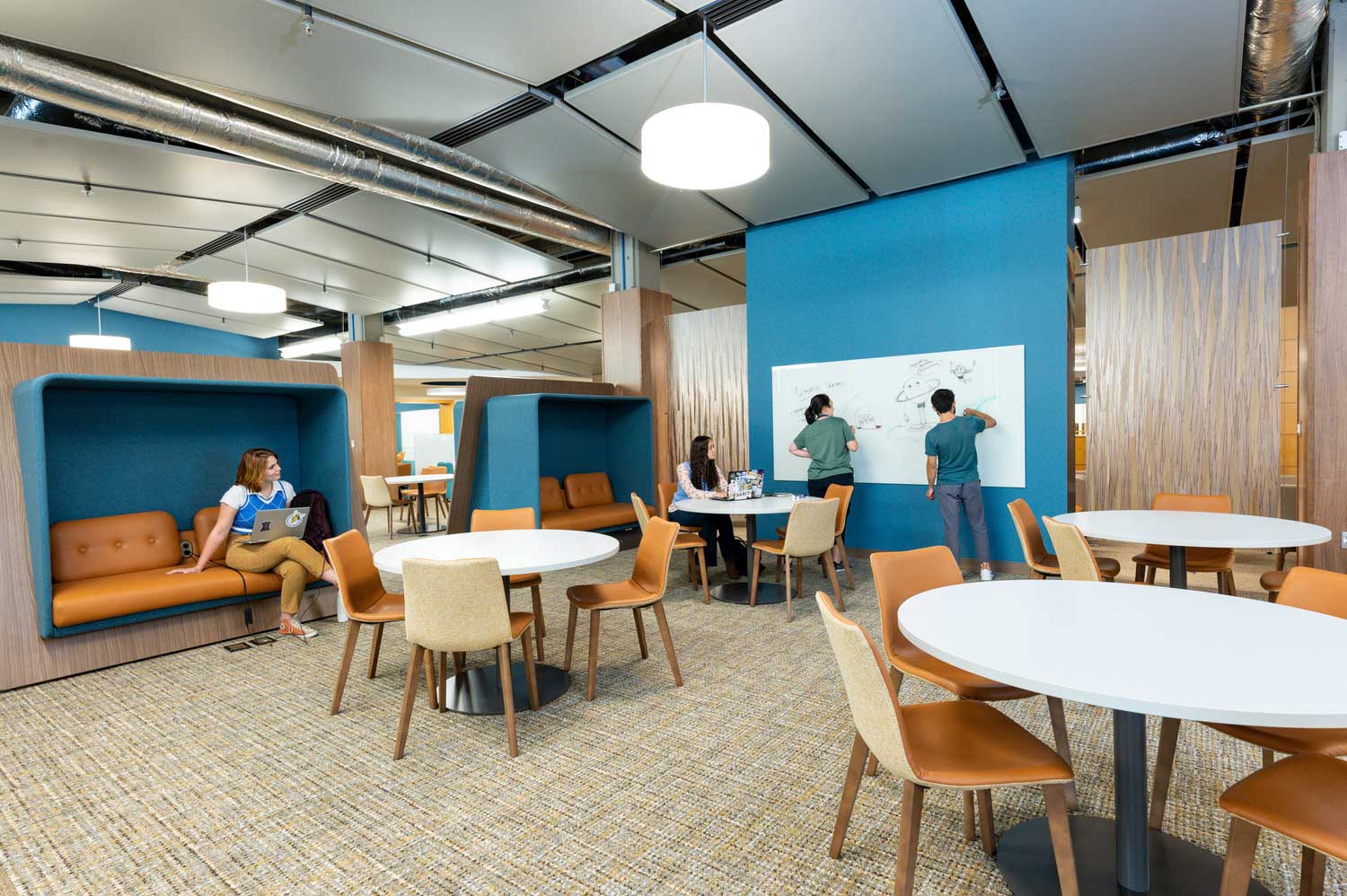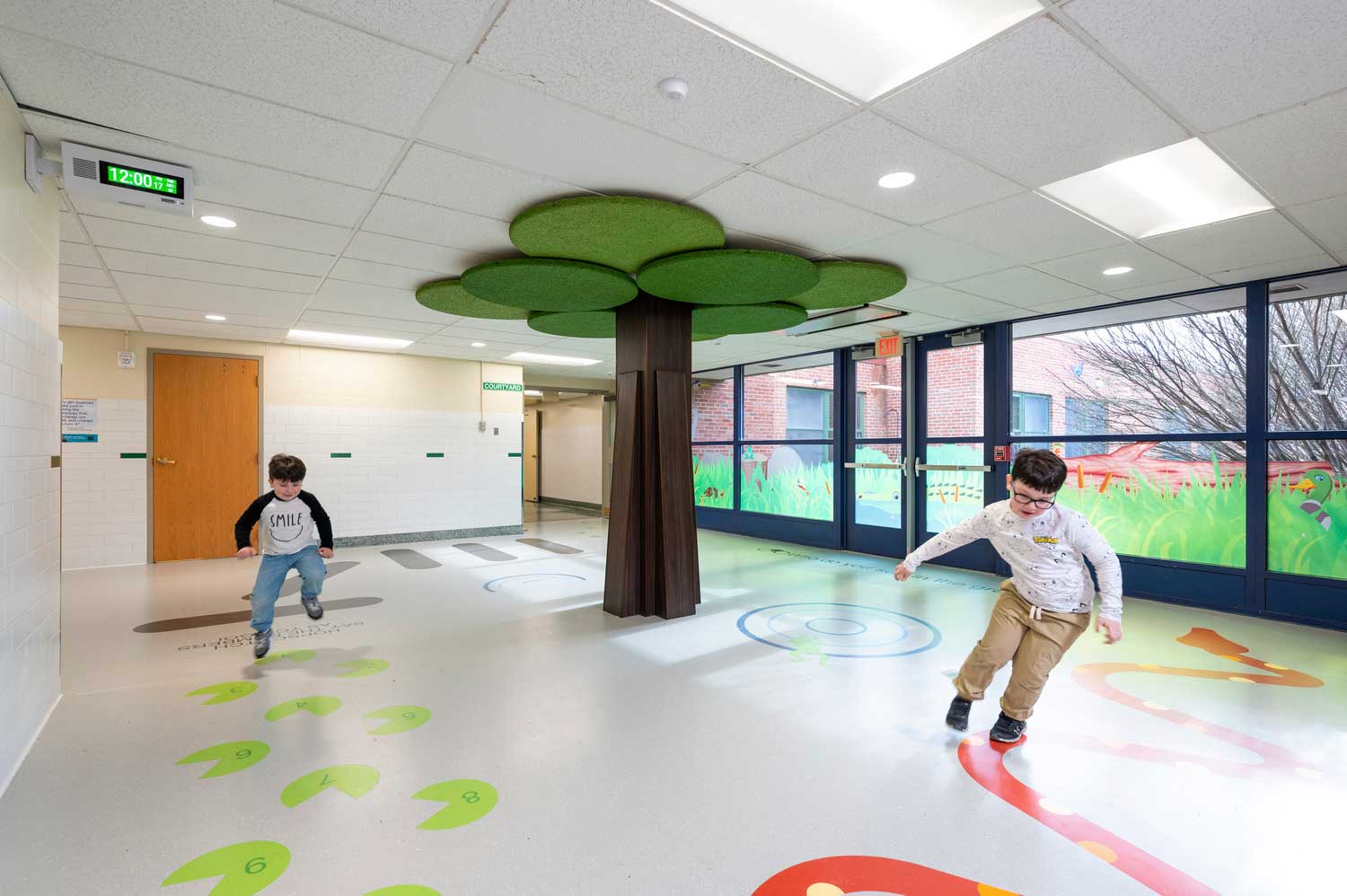Today’s K-12 students face unprecedented challenges; in addition to homework, peer pressure and college prep, they’re grappling with a global pandemic, school violence and social unrest.
Designers have an opportunity to help alleviate their stress by envisioning safe and flexible academic spaces that promote inclusivity and belonging, support physical health needs, and increase comfort for both students and faculty. These elements collectively enhance the shared learning experience, and are instrumental in facilitating student growth and long-term success.
Creating a Sense of Community
How can a sense of community be achieved in a school corridor?
Smart design looks at every nook and cranny in a building, searching for a clever opportunity to make a positive impact on a potential end user.
A small, unused janitor’s closet can be transformed into a private study room. Old display cases can be revamped to better showcase student work. Boring, white walls can become “writable,” presenting students with more ways to collaborate and express their voices.

Each of these examples gives students the power of “choice” in an educational setting. Choice leads to feelings of empowerment and ease, which aid in building a robust learning community.
Championing Physical Health
To ensure the next generation prioritizes living a healthy lifestyle, it’s imperative that we help students understand the profound influence physical health can have on overall wellbeing.
Sensory paths featured throughout school hallways can motivate young learners to jump over a log or balance on one leg, stimulating their senses and leading them to associate physical activity with fun. For older students, providing access to fitness equipment and athletic activities in gym class or on team sports can elevate both their health and interpersonal skills.

Another concept to consider is the integration of a “learning stair” inside a school corridor. These versatile spaces offer formal and informal opportunities to get students together to learn in an amphitheater-like environment. While educators instruct from the stair, children can move around at their leisure, encouraging mobility and keeping engagement levels high.
Promoting Safety in Schools
The importance of creating a comfortable environment for K-12 students cannot be overstated.
This often starts with assessing a school’s indoor air quality to ensure buildings are equipped with proper ventilation, especially during the warmer months when increased humidity can cause tables to become sticky and hotter air can impede students’ ability to focus in class.
By adhering to WELL building standards, we can marry best practices in design with evidence-based medical and scientific research to yield higher indoor air quality inside schools. Furthermore, we can confidently avoid the use of materials containing harmful volatile organic compounds (VOCs) to augment students’ focus and prevent headaches, nausea or other ailments associated with faulty design.
Innovational academic spaces are born from a strong sense of community, efficient programming and sensible materiality, serving to uplift and inspire students. When we leverage thoughtful K-12 designs, we can provide children with the learning environments they deserve, enriching their experiences and paving a smoother path to success for the next generation.

